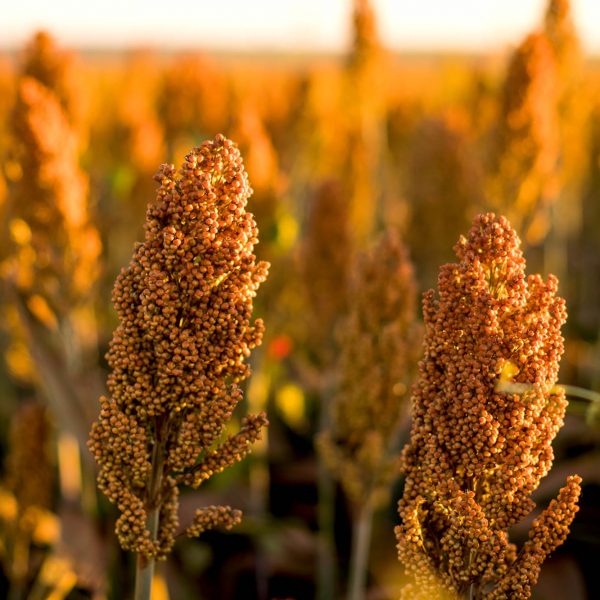

Sorghum Economics
Sorghum: The Smart Choice For Profit Potential
At the Sorghum Checkoff, we know farming isn’t for the faint of heart. From weather that never seems to cooperate to low commodity prices, the risks sometimes seem to outweigh the benefits. With all this working against you, why let rising input costs pile on as well? Sorghum is a smart choice for lowering your cost of production, especially in the way of seed costs. Sorghum seed often costs less per bag than comparable crops, enabling you to stretch each bag across more acres.
Basis Basics
What is basis?
Basis is calculated by subtracting the nearby futures price from the cash price, where nearby is defined as the futures contract closest to the expiration without going into the delivery month. Basis captures the effects of local supply and demand, as well as transportation costs on commodity prices.
What is your basis?
Kansas State University’s AgManager.info site has an interactive crop basis tool that can be used to examine historical weekly nearby basis for sorghum, corn, soybeans and wheat for various locations in Kansas, Nebraska, Missouri, Oklahoma and parts of Colorado and Texas. Use the AgManager Interactive Basis Tool online.
How does basis work for sorghum?
Sorghum basis is priced off of the corn futures contract. Elevators and other grain buyers will use the corn contract to hedge their inventory if they are holding sorghum. So, it is the difference between the cash price at that location versus the board price.
Why is sorghum not on the Chicago Board of Trade?
There is simply not enough volume of grain sorghum to be traded on the CME. In the futures market, liquidity is really important, and you get liquidity with volume. Grain sorghum was traded at Kansas City at one point, but because of the liquidity issues, grain buyers continued to use the corn contract, which suggested the basis risk between corn futures and cash sorghum wasn’t anything that couldn’t be managed.
How does basis vary across the Sorghum Belt?
Basis is going to vary for a number of reasons. It depends how close you are to markets. For example, with significant demand from China over the past couple years, basis has been very strong in many areas but particularly in areas close to terminals where rail cars can be loaded prior to shipping directly to ports.
How is basis related to supply and demand?
In effect, your cash price represents local supply and demand, and the CME is more of a national and international price. For example, if you are in an area where there has been a lot of demand from exporters, feedlots or ethanol plants relative to supply, those operations either have to stop buying or truck in grain. The grain merchandiser then has to pay the transportation cost, and as a result of that low grain supply and high demand, the basis shrinks. The cash becomes very high relative to the futures at that point, because you have to pay enough in cash to pay for what it costs to truck it to the buyer. So, it’s more of a local cash supply situation.
How do changes in the market impact basis?
Short crops in the Corn Belt are supply issues that support a strong sorghum basis. The shipping of sorghum to China is an example of a stronger basis that was demand driven. So, any of those factors, especially local conditions, are going to drive that number more than anything else. If you have a really big crop and the elevators are stacking grain out on the ground, you don’t even have to ask what the bid is for grain—you know the basis is going to be really wide. They’ll buy it, but only at a really reduced cash price, which means a weak basis.
How does basis change throughout the year?
In general, basis is typically weaker at harvest time when farmers are selling grain off the combine. Then it tends to get stronger toward the end of the crop year. It also depends on what is going on in the Corn Belt and in the rest of the world. For example, in years where the crop in the Corn Belt is short relative to demand, the Sorghum Belt tends to see strong sorghum basis. In years like these, it is particularly important to look at contracting to lock profit opportunities.
How does on-farm storage benefit a producer in relation to basis?
In the case of harvest time, elevators typically are buying grain at its weakest basis—the lowest cash relative to futures. If you have on-farm storage, you don’t have to deliver your grain at harvest time. You can retain it and wait for the basis to get stronger before you make the cash sale. That is where on-farm storage pays for itself. And, depending on your setup, you could potentially eliminate your wait time at the elevator if you have got your own facilities, and you can keep the combines moving.
Describe how basis can affect producer profitability.
The stronger the basis, the higher your cash price is relative to the board. So, if you can pick up an additional $0.30/bu, those additional dollars can add up just off of managing basis. There are many farmers who sell grain this way. For example, because of on-farm storage and a farmer’s ability to manage basis, their decision to sell is often driven by how strong the basis is. When the basis is strong, the local market is telling the farmer it needs grain, and it is bidding the cash price up to get it.
Is there a relationship between basis and crop insurance?
The short answer is no. Both corn and sorghum crop insurance set their price elections based off of the CME. The farmer’s actual selling price does affect his insurance indemnity calculation. However, since sorghum is not traded on the CME, RMA uses an average basis from multiple locations to arrive at a percentage of the corn price election for sorghum. NSP helped develop this calculation methodology, which has considerably increased the sorghum price election over the past decade.
Sorghum Basis Snapshots
The following are links to the weekly sorghum basis snapshots provided by Southwest Agribusiness Consulting Inc.

